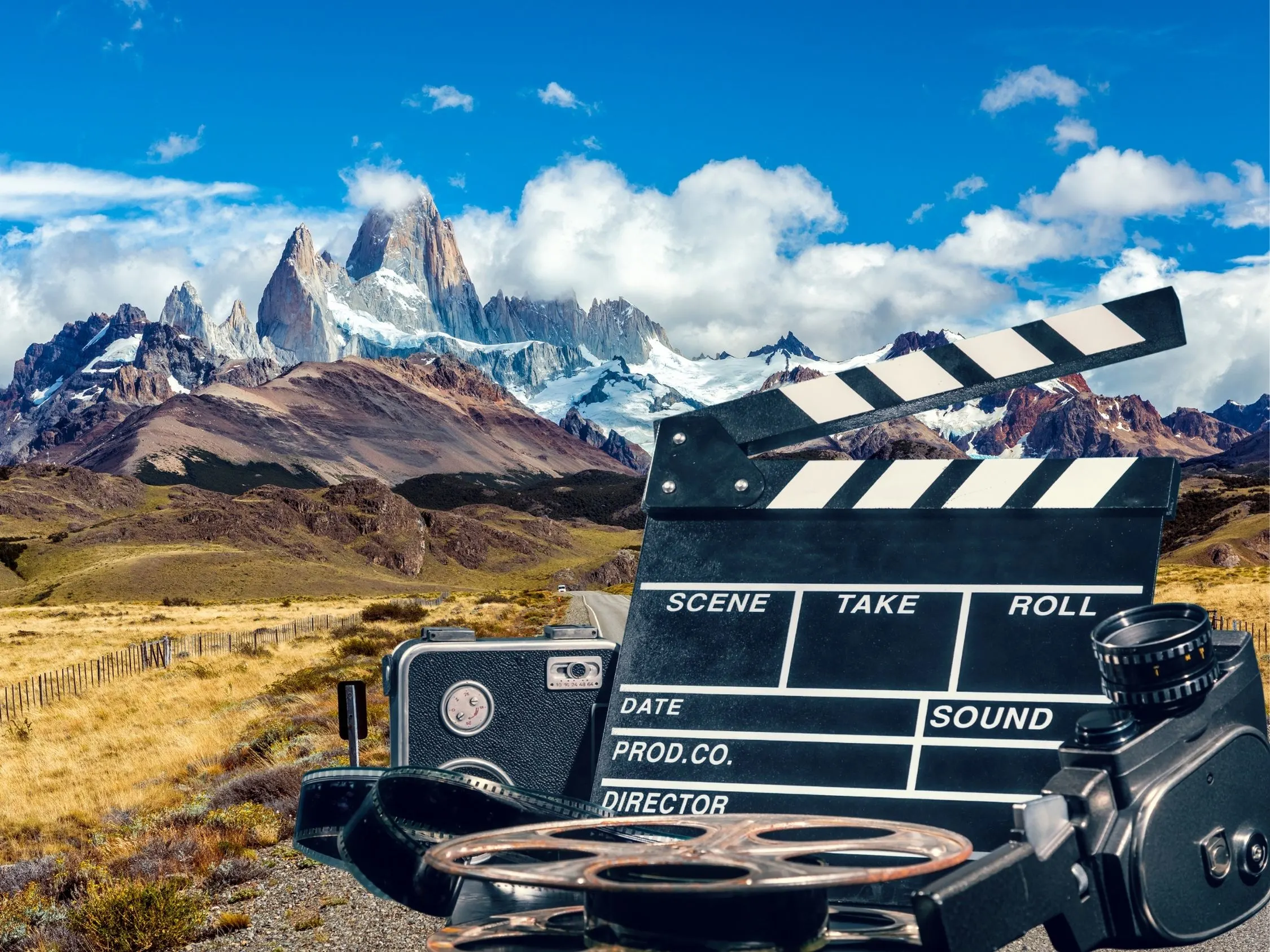Sofia De Vera combines a heartfelt passion for cinema with over 15 years of critiquing for esteemed film publications, wielding academic credentials from the University of Southern California and New York University, to serve as your personal guide through the enchanting worlds of film and television. Her full guest bio can be found here.
Argentina is a country known for its unique and immeasurable landscapes and diverse society. Not to mention its vibrant street life, dynamic cultural legacy, and residents with a flair for the dramatic.
All of these elements have engaged storytellers for years throughout the history of cinema, and as a result, the natural wonders and idiosyncrasies have been immortalized in different international films resulting in a wonderfully complex and exquisite array of movies set in Argentian. Not that you would expect anything less from such an exquisite and complex country.
We love this because one of the reasons why we watch movies is that they offer a novel way to travel to different places while staying at home – and to determine if a destination elicits that ‘spirit of wanderlust’ in us before ever investing in a ticket there.
This is what inspired us to visit Mexico, Maine, and Denmark among many other places. Of course, there are then also those magical times you can steep out in a real-world location and feel instantly transported back inside the movie (thus the popularity of visiting Middle Earth / New Zealand or James Bond’s Skyfall) – and Argentina offer just such moments.
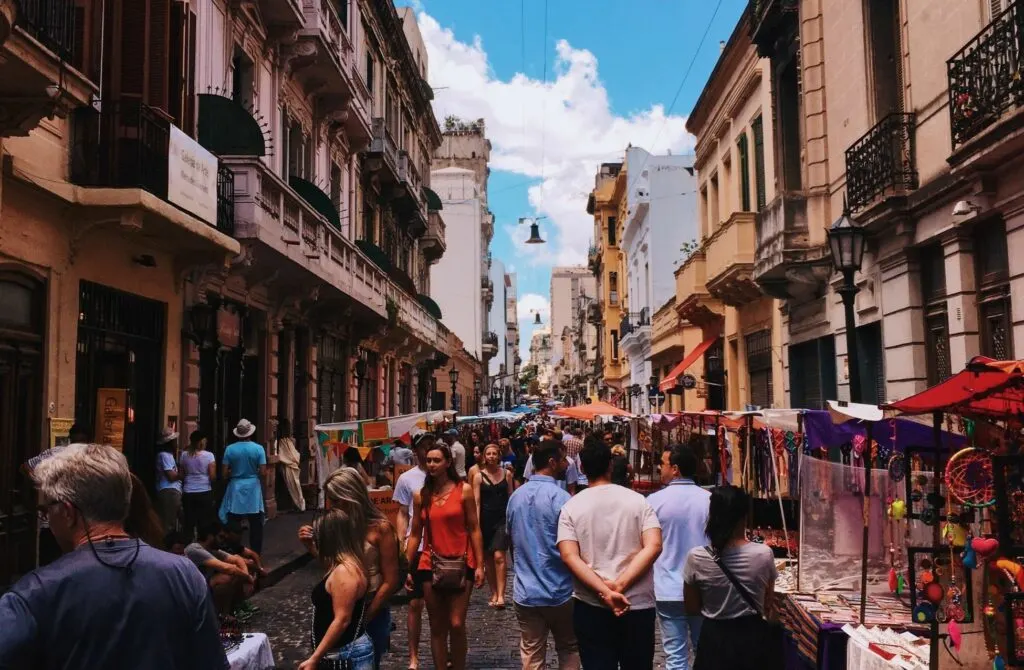
When it comes to Argentina, these films will have you wanting to run off to the otherwordly fourteen-colored Rainbow Mountain, dreaming of all the fun day trips from Buenos Aires, or counting the days until you can explore the iconic landmarks of Argentina for yourself.
In the following paragraphs, we dive into some of Argentina’s best cinematic pieces and why they deserve to be watched, as well as the locations featured and the reasons to visit them. From auteur pieces to Hollywood hits, we share with you a list of titles to get to know this magical country and discover these iconic locations (that you then may be able to visit on your next trip!)
Wondering where to watch? It depends on where you live in the world and which streaming services you have. We link to the streaming service we watch on in each case - be it Netflix, Amazon Prime, Apple TV+, or elsewhere.
You can get one month free of Amazon Prime (or a 6-month trial for students) of Amazon Prime and also get immediate access to FREE Two Day shipping, Amazon Video, and Music. While you won't be charged for your free trial, you'll be upgraded to a paid membership plan automatically at the end of the trial period - though if you have already binged all these, you could just cancel before the trial ends.
Apple TV+ also has a one-week trial, and Hulu has a one-month trial (which can be bundled with Disney!). Another option might be using a VPN to access Netflix titles locked to other regions. Netflix is now available in more than 190 countries worldwide and each country has a different library and availability. US Netflix is (understandably) one of the best.
While we wish everything could just be in one place - for now, it seems these are the best streaming platforms to watch on.
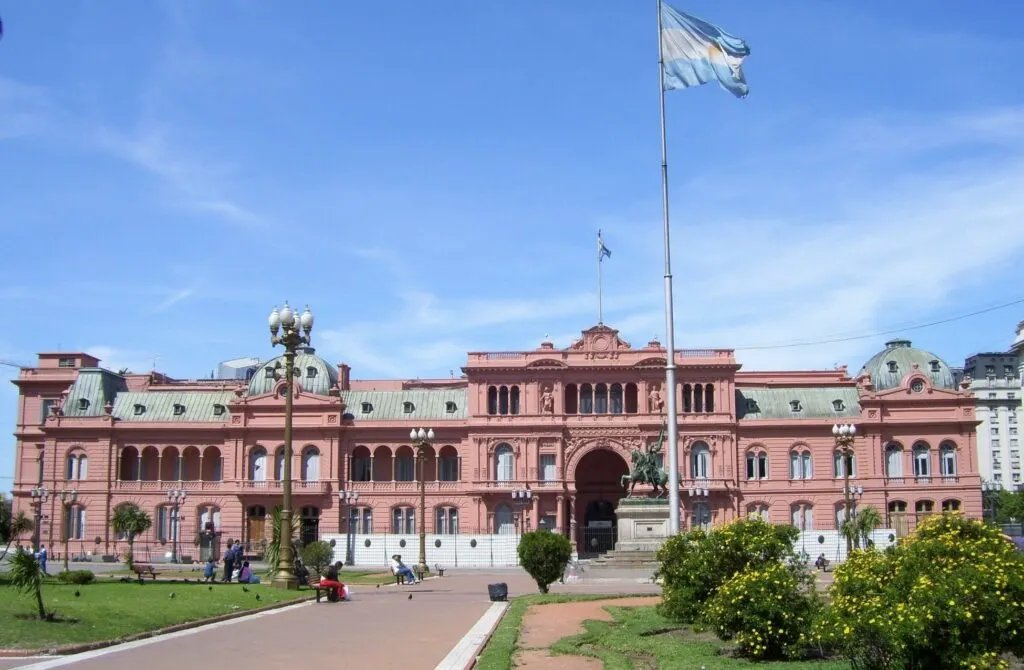
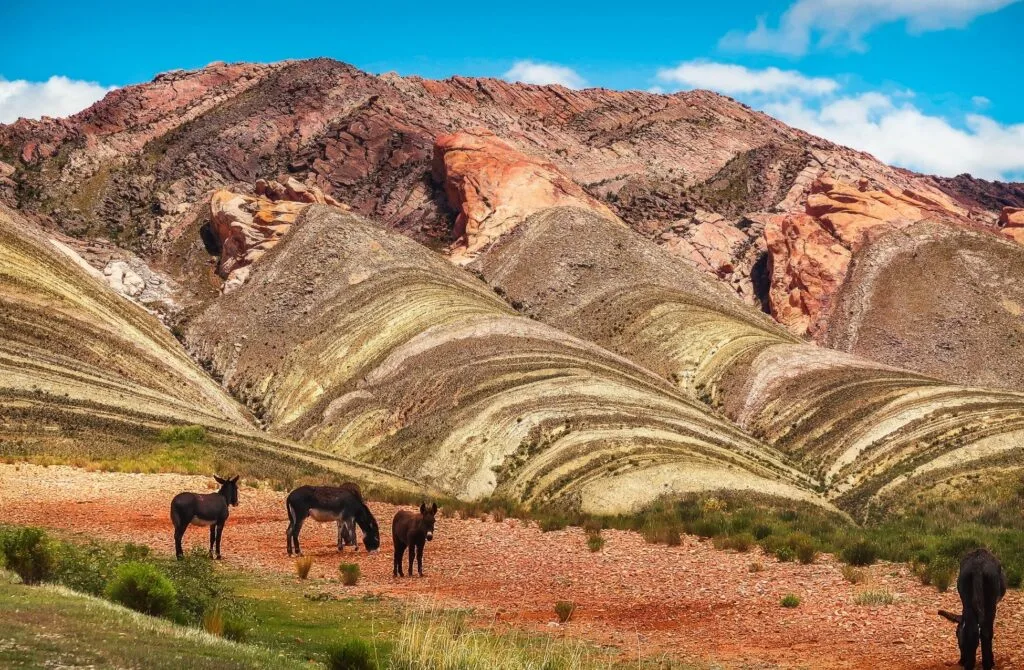
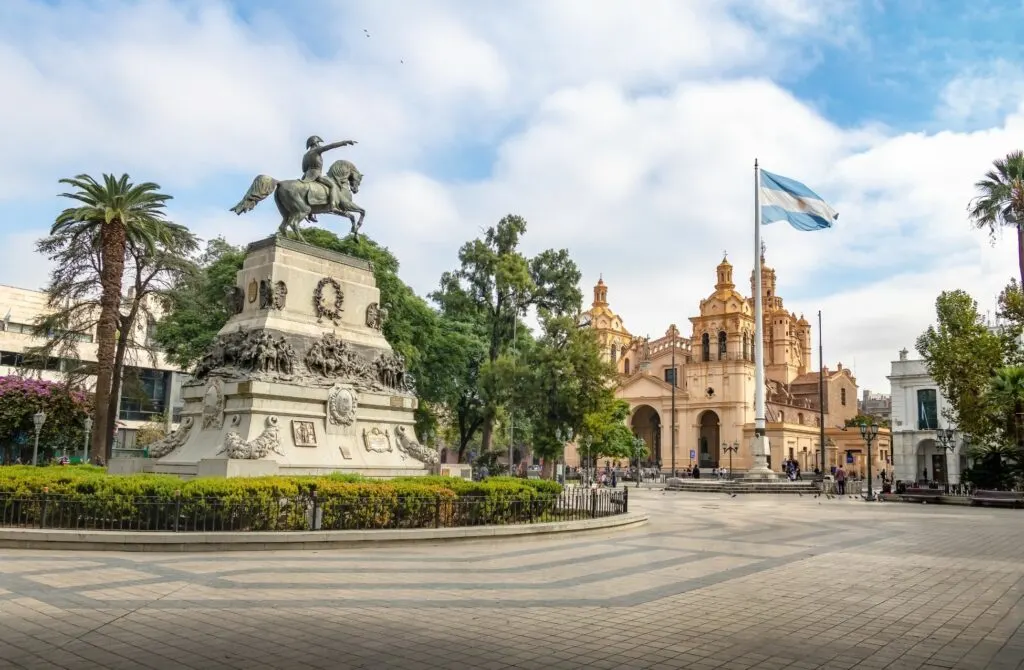
Page Contents
- “Mars Attacks!” (1996) directed by Tim Burton
- “Assassination Tango” (2002) directed by Robert Duvall
- “Lucky Luke” (2009) directed by James Huth
- “Roma” (2004) directed by Adolfo Aristarain
- “Pampa Salvaje” (1966) directed by Hugo Fregonese
- “Apartment Zero” (1988) directed by Martin Donovan
- “Children of Men” (2006) directed by Alfonso Cuarón
- “There be Dragons” (2011) directed by Roland Joffé
- “The Mission” (1986) directed by Roland Joffé
- “Tetro” (2009) directed by Francis Ford Coppola
- “The Fall” (2006) directed by Tarsem Singh
- “The Two Popes” (2019) directed by Fernando Meirelles
- “Happy Together” (1997) directed by Wong Kar-wai
- “South” (1988) directed by Pino Solanas
- “Highlander II: The Quickening” (1991) directed by Russell Mulcahy
- “Gerry” (2002) directed by Gus Van Sant
- “The Way of the Gaucho” (1952) directed by Jacques Tourneur
- “Seven Years in Tibet” (1997) directed by Jean-Jacques Annaud
- “Evita” (1996) directed by Alan Parker
- “The Revenant” (2015) directed by Alejandro González Iñárritu
“Mars Attacks!” (1996) directed by Tim Burton
The film, which plays with political correctness and recreates a tribute to the B movies of the ’50s, features Jack Nicholson, Glenn Close, Pierce Brosnan, Annette Bening, Danny DeVito, Martin Short, Sarah Jessica Parker, Natalie Portman, Michael J. Fox, Rod Steiger, Jim Brown, and Jack Black; and part of it was filmed in Buenos Aires, the capital of Argentina.
This classic film is a parody of other films about extraterrestrial phenomena. The plot is set in the Nevada desert outside Las Vegas when a group of skull-faced Martians emerges from a glowing ship claiming to be peaceful, but without delay, they fulminate all earthlings who get in their way. Thus begins a bizarre high-tech war with wild special effects.
“Assassination Tango” (2002) directed by Robert Duvall
This personal project of the American actor honors his passion for tango in an action thriller. The film tells the story of an assassin for hire who begins to learn the traditional dance from Argentine actress Luciana Pedraza, his real-life wife. During his stay in a cheap hotel, Robert Duvall’s character discovers the idiosyncrasy of Buenos Aires through its streets, people and bars.
Duvall’s film is a postcard of Buenos Aires, showing beautiful images of the popular neighborhood of La Boca and the dance halls in the Villa Urquiza district, where the actor learned to dance tango. Félix Monti’s excellent photography manages to portray the actor’s passion for Argentine culture and introduces the viewer to the festive city of Buenos Aires.
“Lucky Luke” (2009) directed by James Huth
Lucky Luke is, along with Tin Tin and Asterix, one of the classics of French comics. It tells the story of a cowboy who is known for being “faster than his own shadow” and together with his faithful horse “Jolly Jumper”, fights against the injustice of this world. Also, part of the story is remembered characters such as Billy the Kid, Calamity Jane, Pat Poker, Jesse James, and the sexy Belle.
The film was shot entirely in Argentina. The locations chosen by the production company UGC were Salta, Jujuy, San Juan, Mendoza, and the province of Buenos Aires, where a Wild West-inspired town was created for the filming.
There were 42 Argentine actors, with important roles by Luciano Cáceres and Gabriel Corrado, among others.
“Roma” (2004) directed by Adolfo Aristarain
This Argentine-Spanish dramatic film tells the story of a disillusioned writer, who after years without writing, sets out to tell his biography but ends up telling the story of his mother Roma. The story has parallels with the director’s own life, an Argentine writer exiled in Spain. The film, shot in both Madrid and Argentina, is written from the depths of Aristarain’s heart.
The scenes of the writer’s youthful memories take place in Buenos Aires, where he lived from the 1960s to the 1970s. From his childhood to the mistakes of inexperience, the memory of friends, loyalty, the influence of cinema and jazz, the taste of first love, and the intimate relationship with his parents, were captured in the recordings of the Villa de Pueyrredón neighborhood.
“Pampa Salvaje” (1966) directed by Hugo Fregonese
This is a remake of the Argentine film “Pampa Bárbara”, an extraordinary cinematographic work of Argentine cinema. Co-produced by Argentina, Spain, and the United States, the plot is set in a distant fort in La Pampa, a province located in the center of Argentina, in 1830. The film portrays the frontier struggle between a group of Indians and the Argentine army for control of the Pampean lands.
The original film has contributed to the genealogy of the gaucho “people”, and was one of the most important cinematographic achievements of the country in aesthetic terms.
The work is a sample of a way of thinking about Argentine history, focusing on the origins of the “nation” and the “people”, corresponding to the discourses that circulated in those times in which values such as patriotism and loyalty were exalted.
“Apartment Zero” (1988) directed by Martin Donovan
This psychological thriller is set in Buenos Aires in the 1980s and focuses on the paranoia caused by a serial killer on the loose in the city. The British-produced film follows the story of Adrian LeDuc, a reclusive sociopath who is forced to rent a room due to the crisis at his movie theater. But he begins to suspect that his quiet-looking tenant is the killer.
From this premise, he begins a psychological game with the viewer that questions whether it is all just the protagonist’s obsessive imagination or whether the tenant is really a sadistic and perverse person.
The European-influenced architecture of the city of Buenos Aires is a perfect setting to portray the character’s film obsession. The revival house where Adrian lives is also decorated with photos of immortal actors such as Montgomery Clift and other American stars.
“Children of Men” (2006) directed by Alfonso Cuarón
Clive Owen stars in this sci-fi thriller set in the year 2027: two decades of human infertility have left society on the brink of collapse. It was filmed mostly in the UK, but there are some scenes in Buenos Aires, including iconic locations in the Obelisco and Puerto Madero.
The film shows us a city that is overpopulated, functioning as a walled city militarily separated from the outside. Its public spaces are full of graffiti, full of messages of desperation, of pleas that cannot be heard, because no one cares what anyone says anymore.
All the scenes in the film are shot using natural light or fixed light sources. It was shot mostly during sunrises and sunsets on cloudy days, which gives the feeling that time is standing still and that there are no hours.
“There be Dragons” (2011) directed by Roland Joffé
It is a British historical drama set in the midst of the Spanish Civil War. The plot revolves around a young London journalist who investigates his father’s childhood relationship with Josemaría Escrivá de Balaguer, the founder of Opus Dei.
The film began shooting in Buenos Aires and then moved to Spain to finish it. However, much of the film takes place in Luján, a town on the outskirts of Buenos Aires. The film was set in the Plaza de la Avenida, the museum complex, and the famous Basilica, where thousands of believers come after an annual pilgrimage of about 60 kilometers on foot.
Other localities in Buenos Aires that can be appreciated are Tornquist, Villa Epecuén, Sierra de la Ventana, and Coronel Suarez, demonstrating the wide deployment in the Argentine province.
“The Mission” (1986) directed by Roland Joffé
The British film, starring Robert de Niro, revolves around the struggles between Spain and Portugal, for which they disputed the Colonia del Sacramento, located at the mouth of Rio de la Plata, Argentina; and the beginning of the end of the Jesuit Missions in the American continent. The film won numerous awards, including the Oscar for best cinematography (1987). The soundtrack by Ennio Morricone accompanies the idyllic and at times fierce tone of the Argentinean missionary jungle.
Much of the film was shot in the province of Misiones. The Iguazu Falls have been the privileged scenery of this film production. One of the most emotional scenes is the truce between the indigenous people of the jungle and De Niro’s character, a military man when the latter throws his weapons into the river.
“Tetro” (2009) directed by Francis Ford Coppola
This famous drama and suspense film portrays a particular family. The story revolves around a character, the son of Italian immigrants, who travels to Buenos Aires to find his older brother, a poet known as Tetro, who disappeared ten years ago.
When he finally finds him, he is very disappointed because the brilliant artist is no longer the idol of his childhood; he has become distant and disillusioned and wants nothing to do with his family. But eventually, a terrible secret is uncovered through a triangle that is created between the two of them and Tetro’s lover.
The unforgettable drama was filmed mostly in Buenos Aires. The story of Tetro takes place in a mysterious black and white atmosphere of the iconic neighborhood of La Boca and San Telmo. In addition to the typical landscapes, the film portrays other specific (and negative) situations that also characterize the Argentine capital, such as insecurity and street demonstrations.
“The Fall” (2006) directed by Tarsem Singh
The film tells the story of two patients, Roy and Alexandria, who meet in a sanatorium while recovering from their accidents. The plot develops in Alexandria’s imagination from the stories Roy tells her. As a friendship develops, a series of fanciful episodes unfold. This film, which brings back the fantasy genre, is probably the Indian filmmaker’s best work.
The very essence of the tales is made more spectacular before our eyes through Colin Watkinson’s saturated cinematography. As well, the film boasts a mind-blowing production design that takes incredible advantage of the natural landscapes of Argentina and other countries.
The composition of the shots, as if they were unique pictorial facts, causes us to find during the film images of extreme beauty and especially brilliant transitions.
“The Two Popes” (2019) directed by Fernando Meirelles
The dramatic film tries to solve from fiction one of the greatest mysteries that have marked the history of the Vatican in the last 600 years: the resignation of Pope Benedict XVI in 2013, and the unexpected rise of Argentine Cardinal Jorge Mario Bergoglio to the Throne of St. Peter.
Based on the book “The Pope,” the film revolves around a fictional conversation between the Bishop of Rome and the man who would later become Pope Francis, the first Latin American pope.
The film was shot both in Rome and in Buenos Aires, more specifically in Villa 31 or Barrio 31, one of the poorest areas of the city. The scenery in the province of Córdoba was also used. Both locations were used for the scenes of Jorge Bergoglio’s time before becoming Pope, in which we are shown his political militancy, his commitment to the poorest, and his passion for soccer.
“Happy Together” (1997) directed by Wong Kar-wai
The queer-themed film is the stormy story of a couple who go through love from the misunderstandings, lack of money, sacrificed jobs, and life in a foreign country. The film was a co-production between China, Japan, and South Korea; and it was filmed almost entirely in Argentina, mainly in Buenos Aires.
The director wanted to go to the other side of the world to look for landscapes that could not be found in his country. So he came to Argentina to shoot this film about two Hong Kong men who travel to the Latin American country to try to feel again the passion of the beginning of their relationship. The film follows the couple’s journey from their arrival in Buenos Aires to the Iguazu Falls in the north of the country.
Considered a must-see cult film, it is a true work of art because of its cinematography. The film’s unique portrayal of Argentine cultures, such as tango and life in the suburbs, has earned its accolades from Cannes to South America.
“South” (1988) directed by Pino Solanas
This Argentine-French sci-fi film is set in Buenos Aires during the 80s. The plot reconstructs the last stretch of the military dictatorship and the return of democracy through the experiences of Floreal, a worker who is arrested after entering the union organization. The epic plot will feature the participation of national cultural stalwarts.
From a theatrical and surrealistic staging, a dreamlike and poetic atmosphere, and very vivid photography, the director shows the viewer the standards of Argentine culture. He also portrays harsh scenes of the militants and the executions of leaders and detainees.
But in Solanas’ film, life triumphs over death, love over resentment, freedom over oppression, and desire over fear.
“Highlander II: The Quickening” (1991) directed by Russell Mulcahy
The French-British sci-fi/action film, starring Christopher Lambert, Virginia Madsen, and Sean Connery, is the first sequel to the cult hit Highlander. It was filmed in different locations in Buenos Aires, such as Puerto Madero, the Abasto market, the Palacio de Agua Corriente in Villa Devoto, in the Medalla Milagrosa station of the E Line of the subway, and even in the Colón Theater, considered one of the theaters with the best acoustics in the world.
The director has also found fascinating abandoned places, a few meters away from the city, which have served as the setting for the futuristic world of Highlander.
At the time, it was the biggest film ever shot in Latin America. The curious thing is that part of the production initially believed that Argentina was a country full of jungle areas. Instead, they found a modern city and amazing locations.
“Gerry” (2002) directed by Gus Van Sant
The first part of Gus Van Sant’s “Death Trilogy” was filmed between Jujuy and Salta, provinces located in northern Argentina. This film, starring Matt Damon and Casey Affleck, tells the story of two friends who travel through a desert for days. Van Sant intended to shoot the entire film in the salt flats of northern Argentina, but the low temperatures at night meant they had to move part of the shoot to Death Valley in California.
The salt flats are a great display of nature’s beauty. This peculiar landscape is the product of the evaporation of salty waters, product of the volcanic activity, and as a consequence, these salt soils are created. The attraction crosses Jujuy and Salta, separated by the Humahuaca Gorge.
“The Way of the Gaucho” (1952) directed by Jacques Tourneur
This is the oldest film on this list, but that does not detract from its cinematic and historical value. Starring Gene Tierney and Rory Calhoun, this film is a free version of Martin Fierro, the popular literary work considered exemplary of the gaucho genre.
Written by Argentine poet José Hernández in 1872, Martin Fierro was selected as Argentina’s national book and narrates the social injustices experienced by the working gaucho.
The filming was done entirely in Buenos Aires, and local actors were hired for supporting roles. There were numerous conflicts between the production and the Perón government, largely because of the controversy generated by Americans making a film about gauchos.
Part of these conflicts was resolved when part of the film crew was loaned to film Eva Perón’s funeral, which took place at the same time as the filming, but thankfully that returned to finish what is undoubtedly one of the best movies set in Argentina.
“Seven Years in Tibet” (1997) directed by Jean-Jacques Annaud
Starring a young Brad Pitt, the film tells the story of Austrian mountaineer Heinrich Harrer, who on the eve of World War II attempted to climb the Himalayas and ended up imprisoned in a British concentration camp in India. After several escape attempts, he managed to escape and took refuge in Tibet where he became a sort of tutor to the then little Dalai Lama. Above all anecdotes, the film is about the spiritual transformation of a man.
The shooting initially planned in India, had to be suspended due to political issues. The production then traveled to Argentina to film, more specifically, they settled in the Uspallata Valley, in the province of Mendoza, in the Cuyo region. Coincidentally, near this area is a reserve considered Provincial Historical Heritage, which is believed to have been a sacred ceremonial site for the indigenous peoples of the region.
The truth is that the director remembered his trip to Aconcagua and its surroundings, and thanks to the magic of cinema, we all believed that it was Tibet.
“Evita” (1996) directed by Alan Parker
Inspired by Andrew Lloyd Webber’s famous musical, Alan Parker’s film immortalized Eva Perón, the first lady during two presidencies of Juan Domingo Perón between 1946 and 1955. The iconic character of Evita was embodied by another powerful woman, Madonna.
The singer portrayed the life of an actress who became one of the most important political figures in Latin America, a spokesperson for workers and women. Thanks to her intervention, women were able to vote for the first time in Argentina, a major step for feminism and democracy.
The successful film was shot between Argentina and Hungary. Different locations in Buenos Aires were filmed, such as the Lobos district on the outskirts of the city, the Liniers cattle market, and the neighborhood of La Boca, known for the colorful communal dwellings built by Genoese immigrants at the end of the 19th century.
But probably the most memorable scene is Madonna singing “Don’t cry for me, Argentina” on the presidential balcony of the Casa Rosada.
“The Revenant” (2015) directed by Alejandro González Iñárritu
The American semi-biographical film follows the story of a hunter who acts as a guide for trappers in the early 19th century in the interior of the United States. During an expedition, he is taken prisoner by the Arikara Indians, but when he tries to escape, he is attacked by a bear and seriously wounded. The hunter, played by Leonardo DiCaprio, has to fight for his life in an icy and hostile land.
The film, which earned DiCaprio his long-awaited first Oscar, was shot over a year in extreme conditions in Canada. But for the final scenes, it had to be filmed in Tierra del Fuego, also known as the End of the World, as the Canadian lands had run out of snow.
A month before, the site chosen in Ushuaia was taken care of so that the snow would look perfect. In the final complex scene, the incredible beauty of the Fuegian Andes can be appreciated.
.

